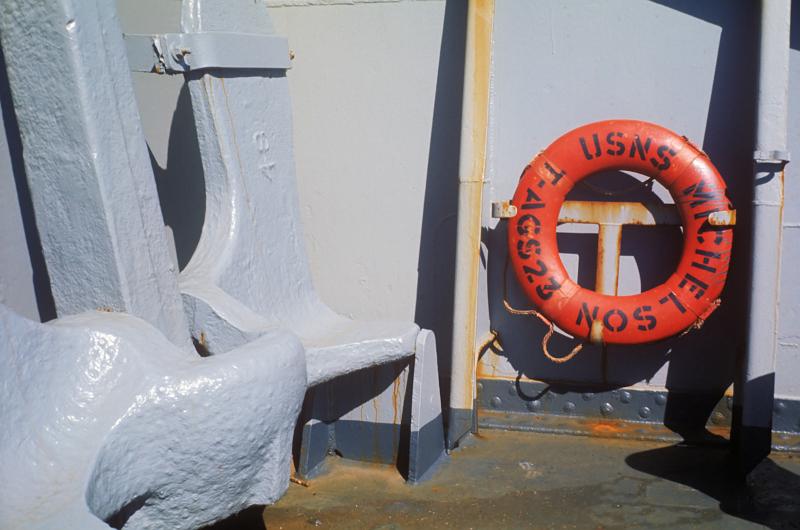
Rust Everywhere
The ship needed some work in those days.


The ship needed some work in those days.
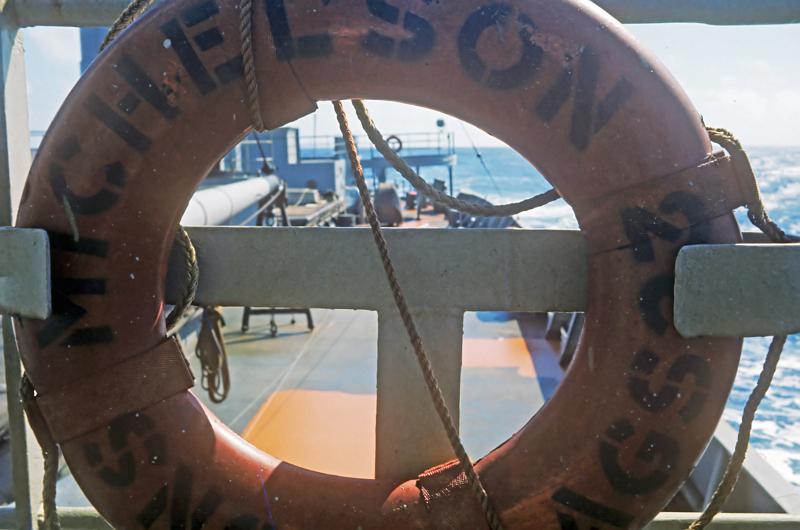
Looks like some rustproofing got started on deck at least.
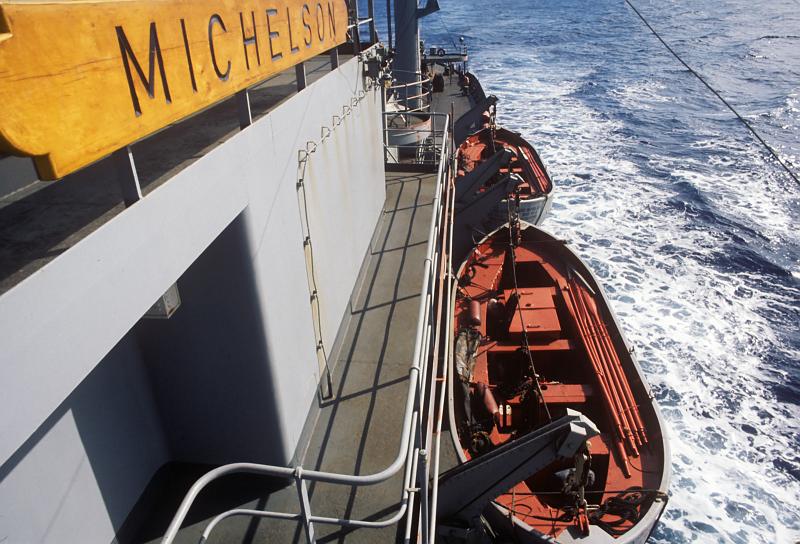
Those loosely secured lifeboat oars would’ve been goners in the north Atlantic. The Pacific was significantly glassier in those days. Rough weather was pretty unusual during my stay on the Mike.
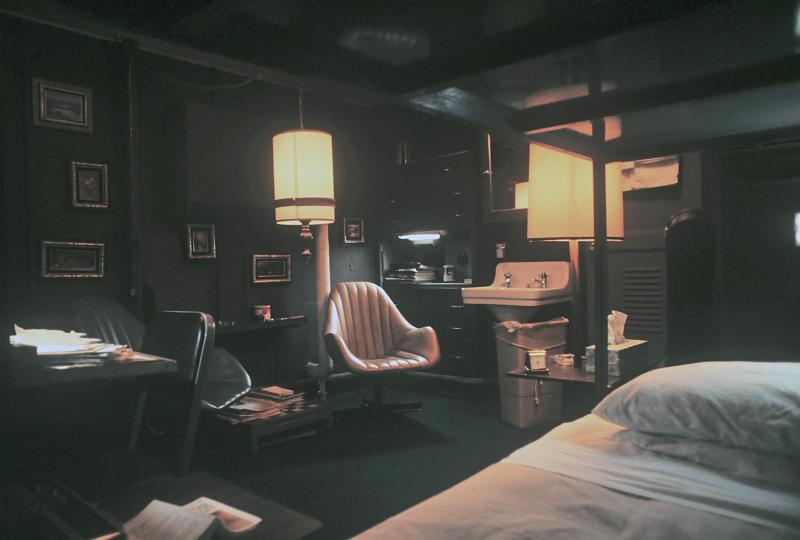
Ron had been on the ship quite a while, and he’d made himself quite comfortable. The man had style. We often sat in this room and dreamed of lives beyond TAGS. One dream that Ron shared with me was the one that involved flying to Hong Kong, buying a sleek, teak Cheoy Lee sailboat, and sailing it back across the Pacific to CONUS. By the time Ron left the ship, Cheoy Lee’s had gone up in price so much, that the dream became impractical. They’re no longer made, but they’re still incredibly beautiful boats. Ron ended up getting married, and I ended up in Germany. Neither situation had much room for a massively expensive, teak mistress.
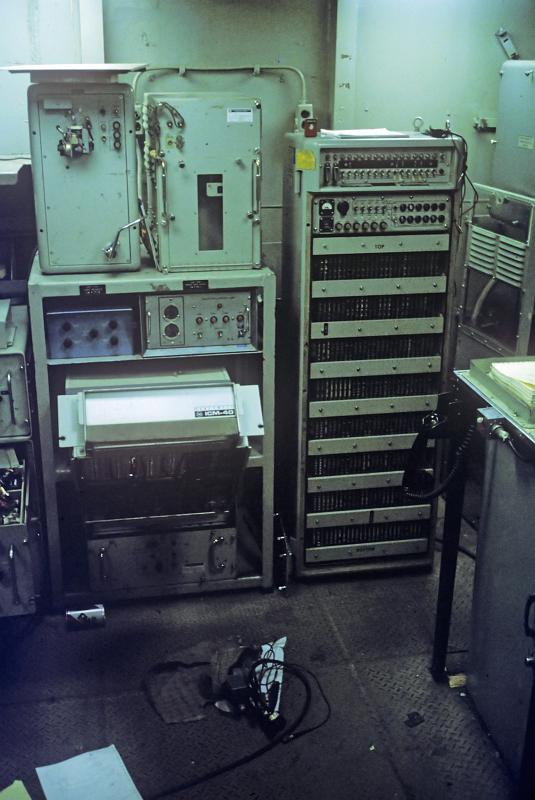
A Bunker-Ramo CP677, these versatile general purpose digital computers were also used to analyze SASS data in Sonar and as part of the AN/BRN-3 Satellite Navigation set.

Hard to believe, but the US had a relatively sophisticated, world-wide GPS system in the 1960’s. It was called the Transit System then. We could only get fixes at multi-hour intervals, because there was only a few birds in orbit then. The accuracy was darned good though, even by today’s standards. This equipment has grown a fifth cabinet from previous marks. Note the safe atop the cabinet on the left used to securely store the crypto tapes used to decode the encrypted signals from the Transit satellites, required to achieve military level accuracy. The curtains at the right were used to obscure the goings on of the Navy techs who loaded the tapes. One of the reasons a Top Secret Crypto clearance was required to work in NIC.

The cabinets on the right, with the round orange CRTs, are the two AN/WPN-3 Loran-C recievers.

This hatchway was cut through the forward starboard bulkhead of NIC, providing access to this equipment and operations space. This used part of the compartment once occupied by the electronics storeroom. During one of the yard periods in the early 70's, the Survey Control Center (SCC), originally located in a space on the 03 Level on the starboard side just aft of the bridge, was moved here. Precision depth recorders and other equipment apparently were added to the OcUNIT TOE.
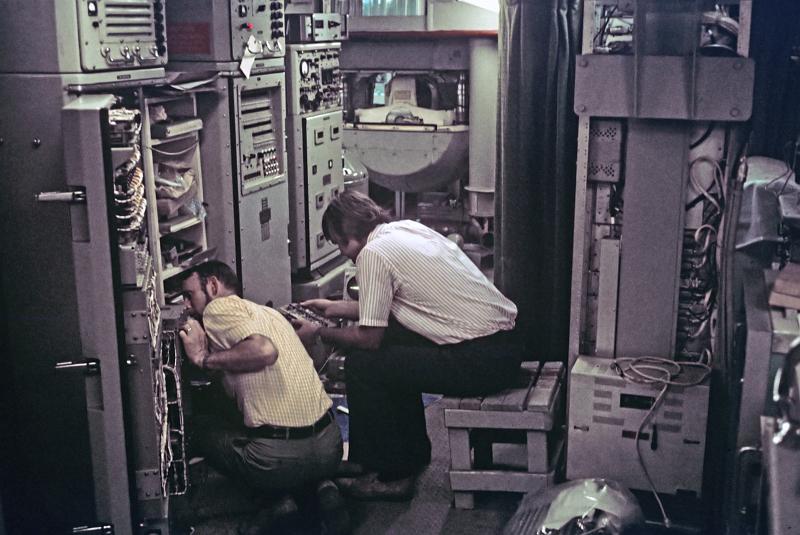
Larry Schaff and Ron Smolinski, the Sperry SINS reps, do their thing to the Sperry Mark 3 Mod 3 SINS.
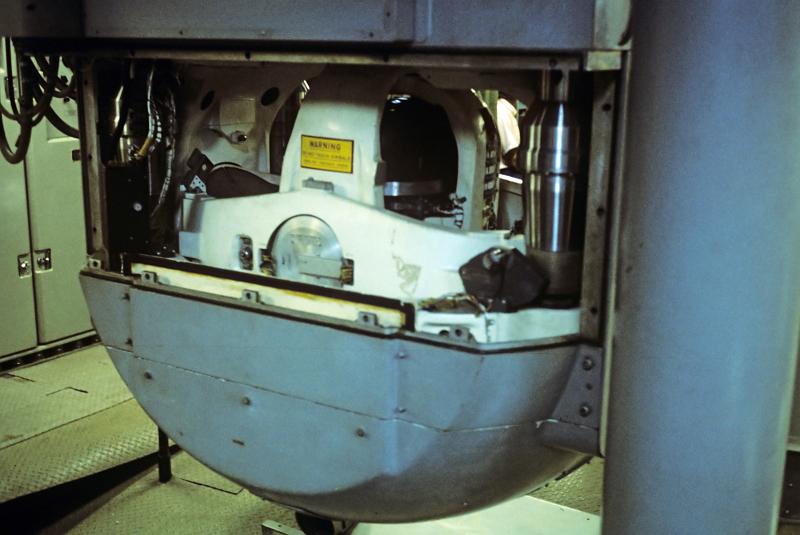
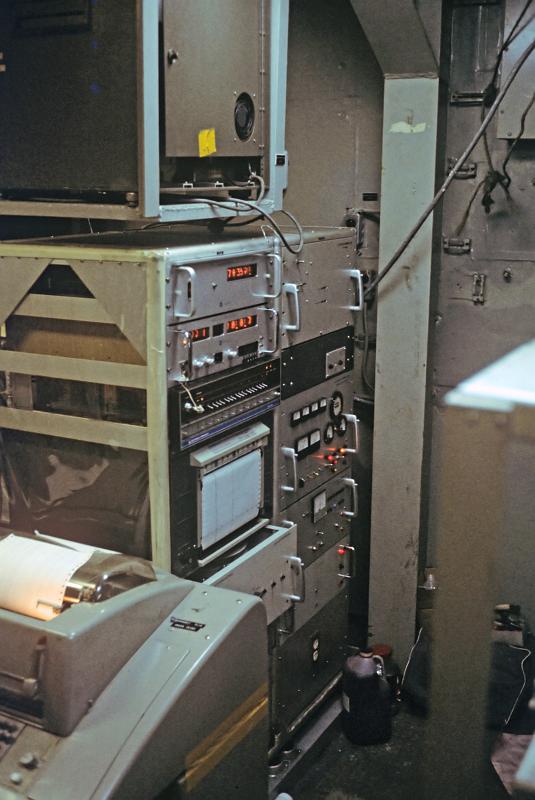
Not sure what this is. Maybe magnetometer electronics.

Not sure what this is either. Perhaps gravity meter stuff.
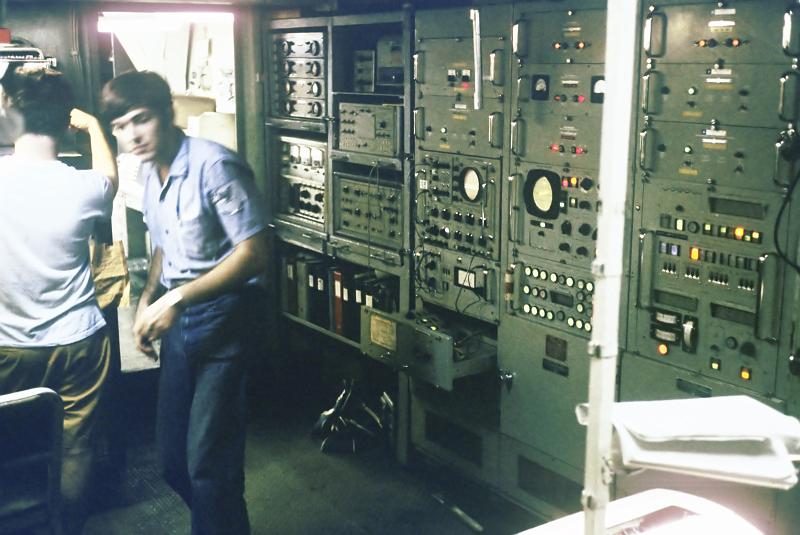
The Control Panel and other equipment cabinets for the SASS sonar.

Magnetic tape drives used to store raw SASS data. Each inport, the tapes were packed up in steel shipping containers and shipped off to NAVOCEANO. The SASS data processing computer, another Bunker-Ramo CP-677, is barely visible on the right. The front doors for the CP-677 are leaning against the cabinets in center frame. Note the 1/4 inch tape reels atop one of the CP-677 cabinets in the top right of the frame.
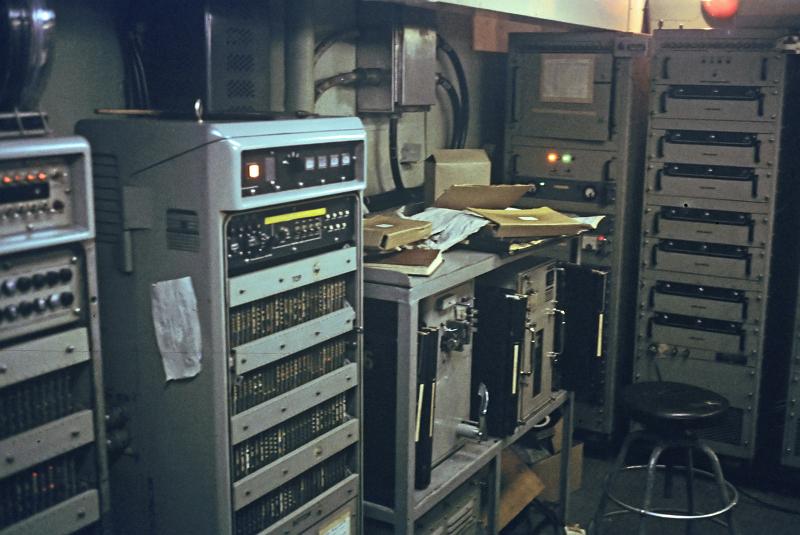
On the left, the cabinets of the SASS CP-677 computer. Note the 1/4 inch tape reals atop the cabinet on the left. The welded steel shelves in center frame support a paper tape reader and punch. These were modified TRW-13x/Bunker-Ramo CP677 machines. 15 bit plus parity buses and registers. Circuit cards were arranged across the rack in rows representing data registers. One transistor flip-flop per card, with a little neon light indicating the state. These things were fairly easy to keep adjusted and running. These computers were developed specifically for Fleet Ballistic Missile submarine use. The form factor for equipment racks for FBM use was generally fixed by the size of standard hatches. Hence, the tall, skinny form factor. The TRW-series computers were among the first transistorized ones used on Navy ships for that reason.